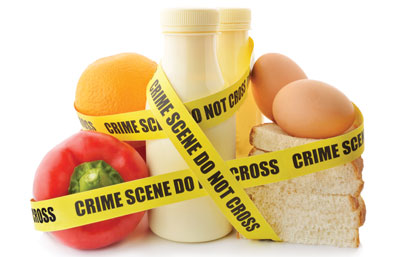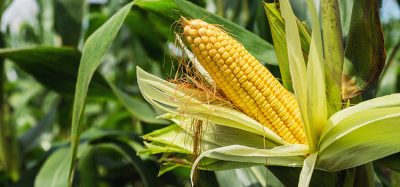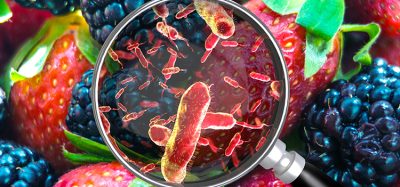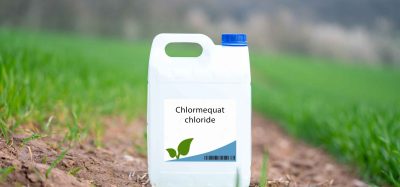Food Contaminants: Definitions, acceptability and EU contaminant legislation
- Like
- Digg
- Del
- Tumblr
- VKontakte
- Buffer
- Love This
- Odnoklassniki
- Meneame
- Blogger
- Amazon
- Yahoo Mail
- Gmail
- AOL
- Newsvine
- HackerNews
- Evernote
- MySpace
- Mail.ru
- Viadeo
- Line
- Comments
- Yummly
- SMS
- Viber
- Telegram
- Subscribe
- Skype
- Facebook Messenger
- Kakao
- LiveJournal
- Yammer
- Edgar
- Fintel
- Mix
- Instapaper
- Copy Link
Posted: 27 October 2014 | Sarah Howarth, Scientific Committee Member, IFST | No comments yet
If we were to ask a lay person to provide a definition of food contaminants, we would expect something along the lines of: a product which cannot be eaten or used; something which is harmful; a material which should not be present; poisonous; and polluted. These definitions communicate a rather black and white belief that the food concerned cannot be consumed. Are these lay consumers correct in their understanding? For example, if we find traces of any substance defined as a ‘contaminant’ in a food, is it unacceptable? If this was correct then most foods would be removed from the market…


Looking to the Codex Committee on Contaminants in Foods1, we find the following committee terms of reference: “To establish or endorse permitted maximum levels or guidelines levels for contaminants and naturally occurring toxicants in food and feed; (b) to prepare priority lists of contaminants and naturally occurring toxicants for risk assessment by the Joint FAO/WHO Expert Committee on Food Additives; (c) to consider methods of analysis and sampling for the determination of contaminants and naturally occurring toxicants in food and feed; (d) to consider and elaborate standards or codes of practice for related subjects; and (e) to consider other matters assigned to it by the Commission in relation to contaminants and naturally occurring toxicants in food and feed.”
Within the EU we define contaminants in foods as follows2: “Contaminants are substances that have not been intentionally added to food. These substances may be present in food as a result of the various stages of its production, packaging, transport or holding. They also might result from environmental contamination. Since contamination generally has a negative impact on the quality of food and may imply a risk to human health, the EU has taken measures to minimise contaminants in foodstuffs.”
There is a useful factsheet that can be found on the EU website3. The Codex and EU definitions give us hope; maybe our products can be sold after all provided that the levels of any contaminants present do not lead to the product endangering public health. So as our understanding broadens so does the complexity in determining the line between ‘safe’ and ‘unsafe’.
How do we determine the threshold between safe and unsafe?
As we start to dig deeper into the subject we recognise that some contaminants may be acceptable in foods at or below certain levels, whilst other contaminants are not permitted. These are commonly known as ‘zero tolerance’, meaning that any level detected above the ‘limit of detection’ is unacceptable such is the case with non-GM-approved events within the EU.
When determining the acceptable level of a contaminant we must take into consideration both the level deemed safe to consume using toxicological assessment and the lowest levels which can be achieved using best industry practice. In most cases the lower of these two assessments defines the level of acceptability using ALARA (As Low As Reasonably Achievable) principles.
Toxicological risk assessment is based on the route of exposure, duration and frequency of intake, interaction in the body coupled with age, weight, health and typical consumption patterns. Common substances which can be beneficial at certain dosage levels can become toxic when consumed at higher levels, hence the importance of understanding typical consumption behaviours in a given population and its sub groups.
In addition to the scientific assessment external factors such as public opinion, special interest groups and cultural expectations must also be taken into account. Within the EU, the European Food Safety Authority (EFSA) is responsible for the scientific reviews on existing and emerging risks. The EFSA website provides a useful resource tool across many contaminants4.
Within the EU which food contaminants are regulated?
EU Regulations set maximum levels for a range of food contaminants in food. A summary is given in Table 1.
Analytical method and sampling plans are often developed in combination to support contaminant legislation with the aim of ensuring analysis results are meaningful. For example, sampling and analysis plans for mycotoxins are set out in EU regulation No.178/2010, as typically mycotoxins are not homogeneously distributed.
Physical contaminants are not currently regulated within the EU however must be included in HACCP (Hazard Analysis Critical Control Point) risk assessments. Typical physical hazards for assessment may include: pests, glass, wood, stones, metal, bone, plastics and personal effects. The size and the shape are important when assessing the hazard severity for a given target group. Spherical shapes more readily present a choking hazard, while sharp objects can damage internal organs. Physical hazards presenting a low risk to the general public can become a significant hazard to infants e.g. grapes can cause choking in young children.
In addition to horizontal legislation, which impacts all foodstuffs, it is essential to understand product and market sector legislation. In many cases the level of acceptability for a given contaminant will differ across sectors. For example, foods intended for infants and young children have lower levels of acceptability to those intended for the general healthy population group.
How does EU Regulation compare with non-EU countries?
Legislated permitted levels for contaminants in foods may vary outside of the EU. A useful starting point is to review the CODEX Alimentarious established with the aim of harmonising international standards5. In addition to ensuring that CODEX standards are met products must comply with the national regulations in the countries where products will marketed.
In many cases differences and gaps exist between the EU Regulations, CODEX Standards and national legislation. For example, in the CODEX pesticide residues database6 standards are not established for nuts (whole in shell). However within the EU pesticide database7 Pesticide Maximum Residual Levels are set across a variety of treenuts.
What are the most common contaminants found in food?
The European Commission produces a weekly summary of the most significant food safety risks to public health across the EU known as RASFF (Rapid Alert system for Safe Food and Feed)8. This is a useful resource to keep informed on external events which could trigger a food safety review.
Figure 1 provides a summary of the RASFF 2013 Annual Report Review by hazard notification.
Where do allergens fit in the picture?
Allergenic foods are not categorised as contaminants, however they can be harmful to health for those groups suffering from food allergies. Within the EU we currently have a list of 14 allergens as a result of EFSA risk assessment. These must be specifically labelled (EU regulation No.1169/2011) to inform the consumer when allergenic foods are present.
Within the UK one of the major reasons for product recall is attributed to incorrect allergen labelling. In 2013, the FSA Incident report highlighted that four allergens accounted for more than half of allergen incidents in the UK: peanuts, sulphites, milk and gluten containing cereals9.
Research studies are currently being commissioned by the FSA to establish threshold levels on significant allergens with the aim of reducing the large amount of foods which carry precautionary labelling that cannot be consumed by a large part of the population10.
Gluten is one of the few allergens that have threshold levels established. Within legislation the maximum permitted level which may be present before a product may be labelled as ‘Gluten Free’ is defined.
Best practice for industry for managing contaminants in foods
It is essential to understand your entire supply chain from farm to fork to ensure all contaminants which may be present, introduced, grow or survive are picked up during the risk assessment. This information must also be actively included in HACCP and Policy Research Programmes.
A clear and accurate map of each process step and their inter relationship is helpful as the foundation. The mapping can also be useful as a communication tool which can be easily understood and shared with stakeholders throughout the supply chain. As in in many cases it is poor communication which leads to food safety incidents of the entire supply chain.
Once the initial supply chain mapping has been completed it is important to establish a process which will ensure any internal and/or external changes are reviewed to assess their impact on the risk assessment.
In the majority of cases there will be co-products streams and/or rework generated which must also be assessed. In some cases contaminants may be concentrated in co-product streams. Further adding to the complexity of the task co-products may be destined for different market sectors to that of the main stream food product. These market sectors, in the majority of cases, will have different food safety, regulatory and quality requirements.
Below is a summary of some tools which may be useful to support effective communication with stakeholders and build a solid understanding of the supply chain and ensure events impacting food safety are flagged enabling them to be assessed and addressed in the food safety programmes as appropriate:
- Training
- Supplier assessment and selection
- Vendor rating
- Supplier communication
- Specifications
- Contracts
- Developing a strong link with the customer and consumer
- Understanding the application and use of the finished product.
Conclusion
There is a growing need for continual risk assessment as our global supply chain evolves and science advances to manage the risk of contaminants in foods.
It is important to assess all potential hazards based on Codex HACCP principles11 throughout the supply chain combined with a sound understanding of consumer behaviours i.e. not just focusing on regulation which currently covers chemical and microbiological hazards within the EU or making assumptions on how products should be stored and handled in the home.
As analytical techniques develop we are able to discover new hazards and detect current known hazards to lower levels. When analysis is carried out we must ensure appropriate sampling and analysis techniques are applied for meaningful results.
We must also not forget the risk of economic adulteration which has been with us throughout history; however in today’s global market place the impact of such events have a greater magnitude.
We therefore need to develop and continually review our food safety systems using a risk based scientific approach with stakeholder inputs throughout the supply chain. Being sure to make good use of the broad range of external resources and industry guides available, such as Codex, EFSA, FSA and industry associations publications. As well as keeping a watch on external events in the market place which may trigger additional reviews to those planned as a result of internal changes.
References
- Codex Committee on Contaminants in Foods (CCCF): www.codexalimentarius.org/committees-and-task-forces/en/?provide=committeeDetail&idList=39
- EU Definition of Contaminants in Foods: http://ec.europa.eu/food/food/chemicalsafety/contaminants/index_en.htm
- EU factsheet on Contaminants in Foods: http://ec.europa.eu/food/food/chemicalsafety/contaminants/fs_contaminants_final_web_en.pdf
- EFSA: efsa.europa.eu/en/panels/contam.htm
- Codex Alimentarius: codexalimentarius.org
- CODEX pesticide residues in food database: codexalimentarius.org/standards/pesticide-mrls/
- EU Pesticide Database: http://ec.europa.eu/sanco_pesticides/public/?event=homepage
- EU RASFF system: http://ec.europa.eu/food/safety/rasff/index_en.htm
- FSA 2013 Annual Report on incidents: food.gov.uk/sites/default/files/multimedia/pdfs/publication/annual-report-incidents-2013.pdf
- FSA Allergen Research into threshold levels: food.gov.uk/science/research/allergy-research
- EU HACCP guidance document: http://ec.europa.eu/food/food/biosafety/hygienelegislation/guidance_doc_haccp_en.pdf
About the author
Sarah Howarth is an experienced food professional currently working as an independent Food Safety specialist helping companies to protect their brands and grow in a sustainable way. She is also a Scientific Committee Member of IFST. Sarah’s areas of expertise include food labelling compliance, accredited food hygiene and HACCP training and food safety and regulatory support. During her 25-year career, Sarah has worked at Unilever, Cott Retail Brands, Yum Brands (formerly PepsiCo Restaurants), and most recently Cargill, where she was Head of the Grains and Oilseeds Europe Product Assurance Team. Since leaving Cargill, Sarah has founded independent consultancy, Howarth Food Safety.







